
Miso soup is a daily staple on the Japanese table that’s highly customizable with what’s in season and in the fridge. If you’re looking to shake up your classic miso soup routine, try this Spinach and Mushroom Miso Soup recipe. It’s a delicate bowl that pairs tender and silky textures with mild flavors. The best part? It’s ready in 15 minutes.
Need more miso soup recipes? Try my Homemade Miso Soup, Tonjiru, and Cold Miso Soup next!
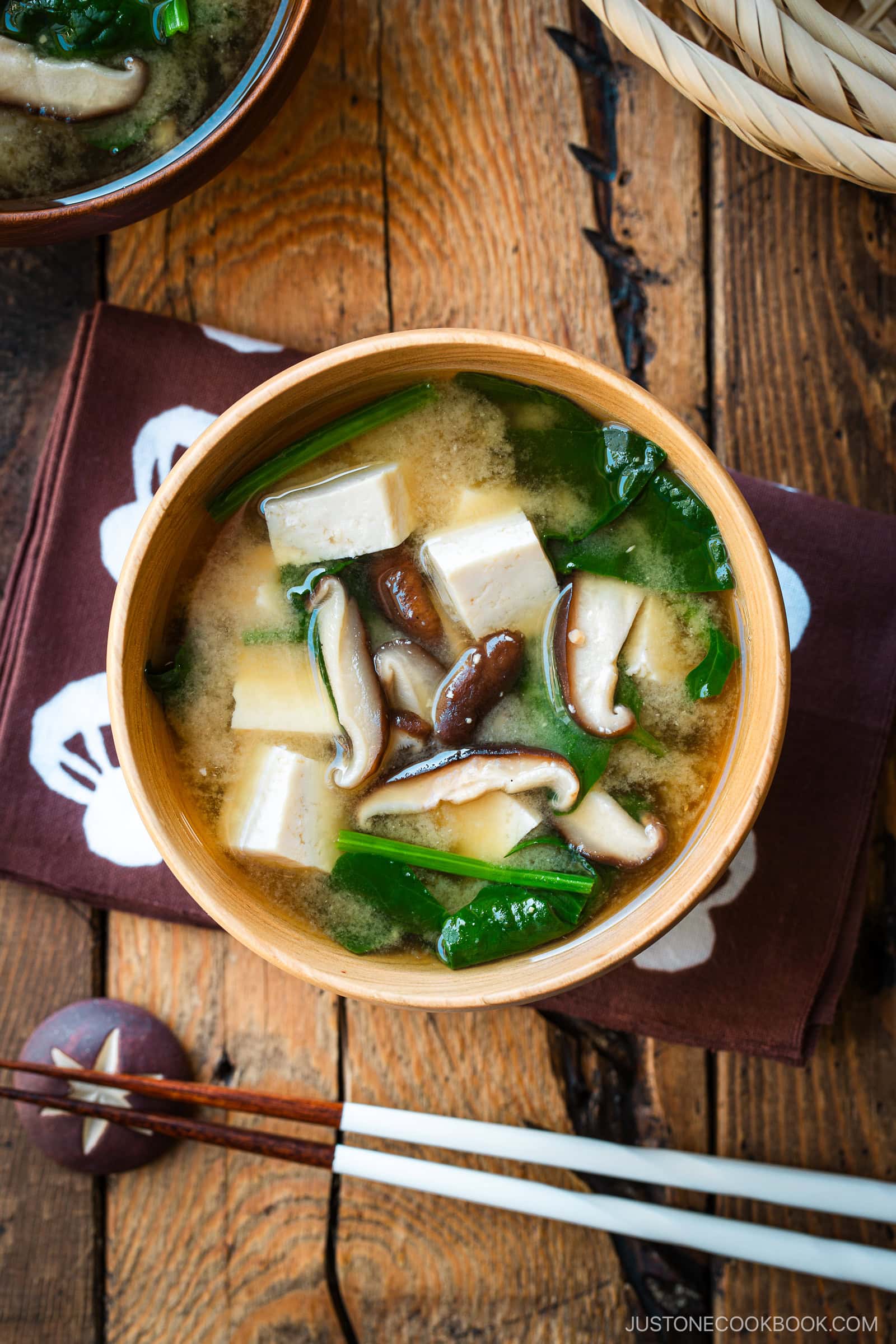
Ingredients for Spinach and Mushroom Miso Soup
- Fresh spinach
- Shiitake mushrooms
- Soft/silken tofu (kinugoshi dofu)
- Miso
- Dashi packets and water
Find the printable recipe with measurements below.
Jump to RecipeSubstitutions
- Miso: Any type will work. Since some types are saltier than others, I recommend starting with the lesser amount, then tasting the soup to decide if you want to add more.
- Dashi packets: I love using these convenient packets. They make a quick dashi in 5 minutes that tastes nearly as good as Awase Dashi from scratch. In a pinch, you can use dashi powder and water to make an instant stock, but it’s not as flavorful. You can also make plant-based Vegan Dashi.
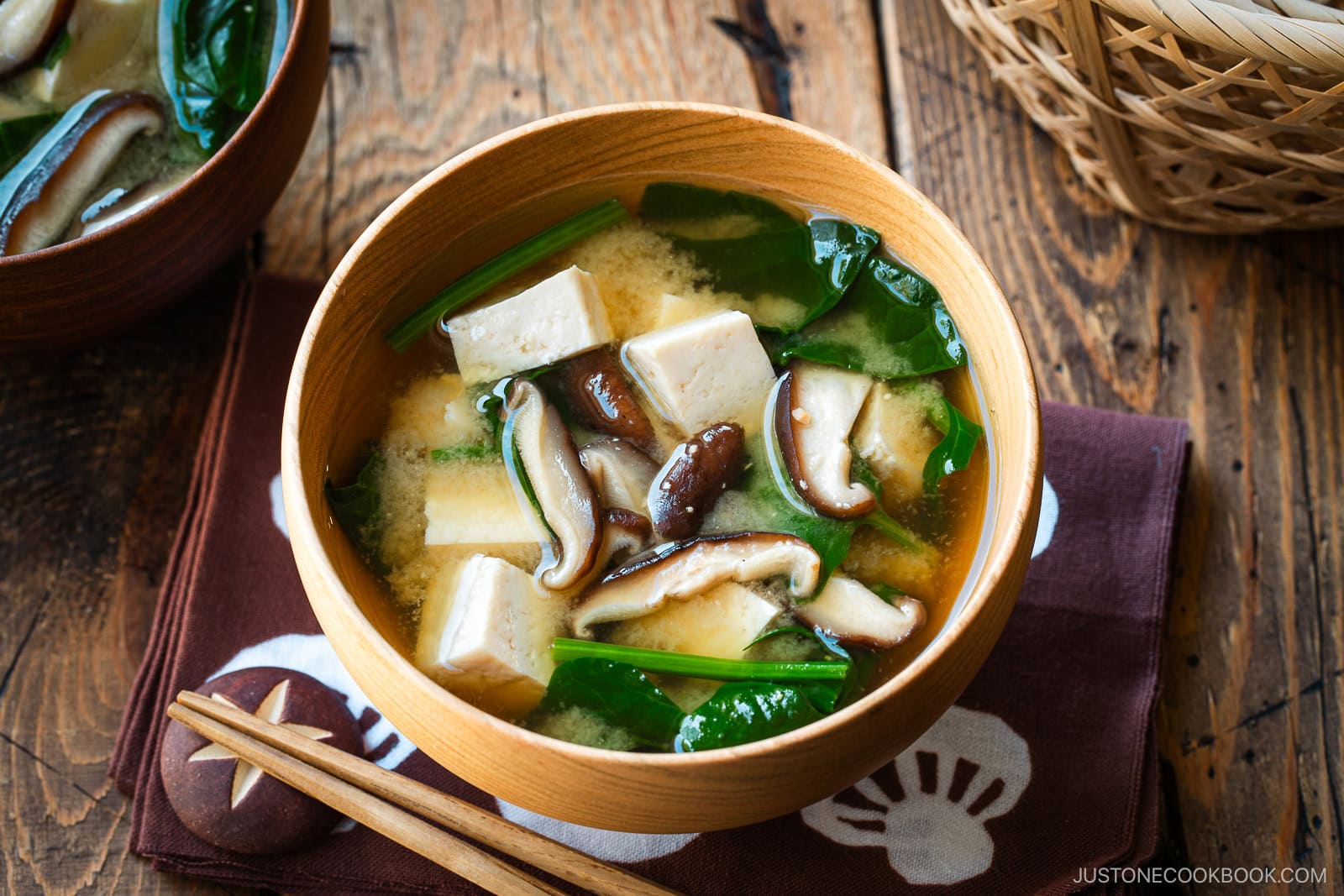
How to Make Spinach and Mushroom Miso Soup
Preparation
Step 1 – Cut. Thinly slice the shiitake mushroom caps. Trim the spinach and cut into shorter pieces.

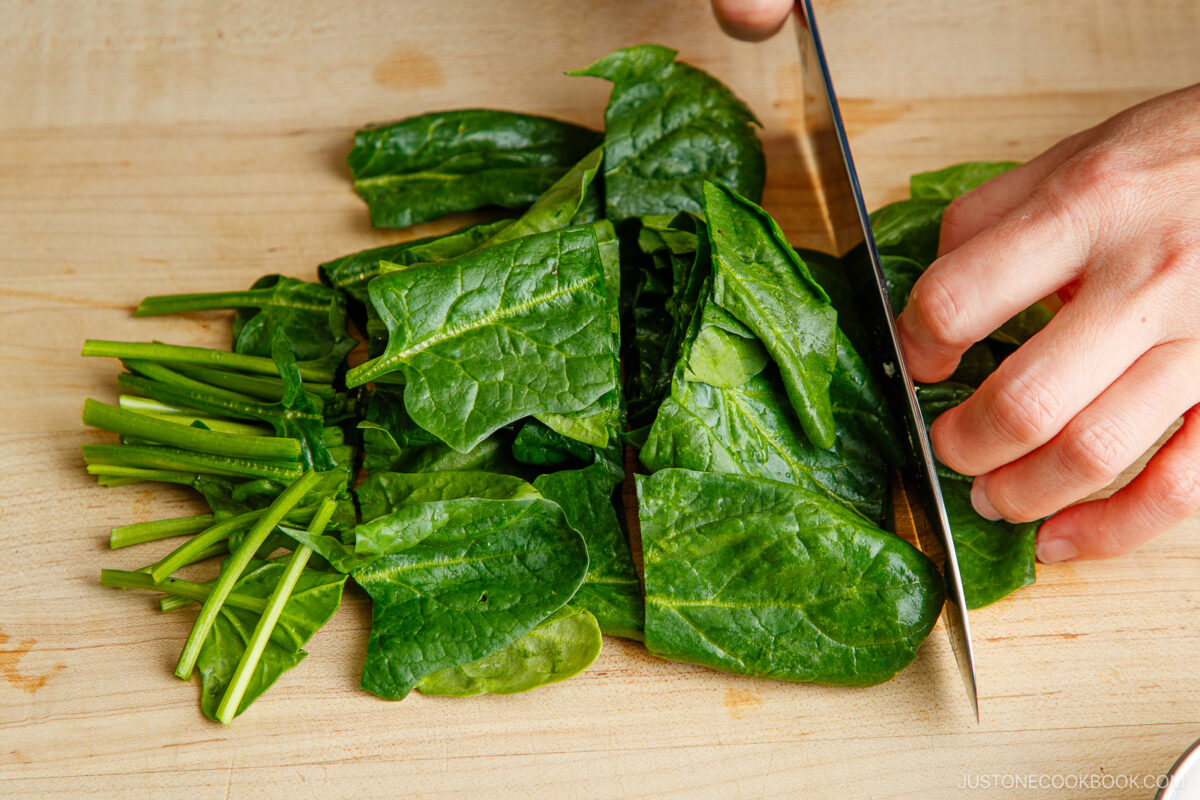
Cooking
Step 2 – Make the quick dashi. Bring a few cups of water and the dashi packets to a boil. Cook briefly, then discard the packets.
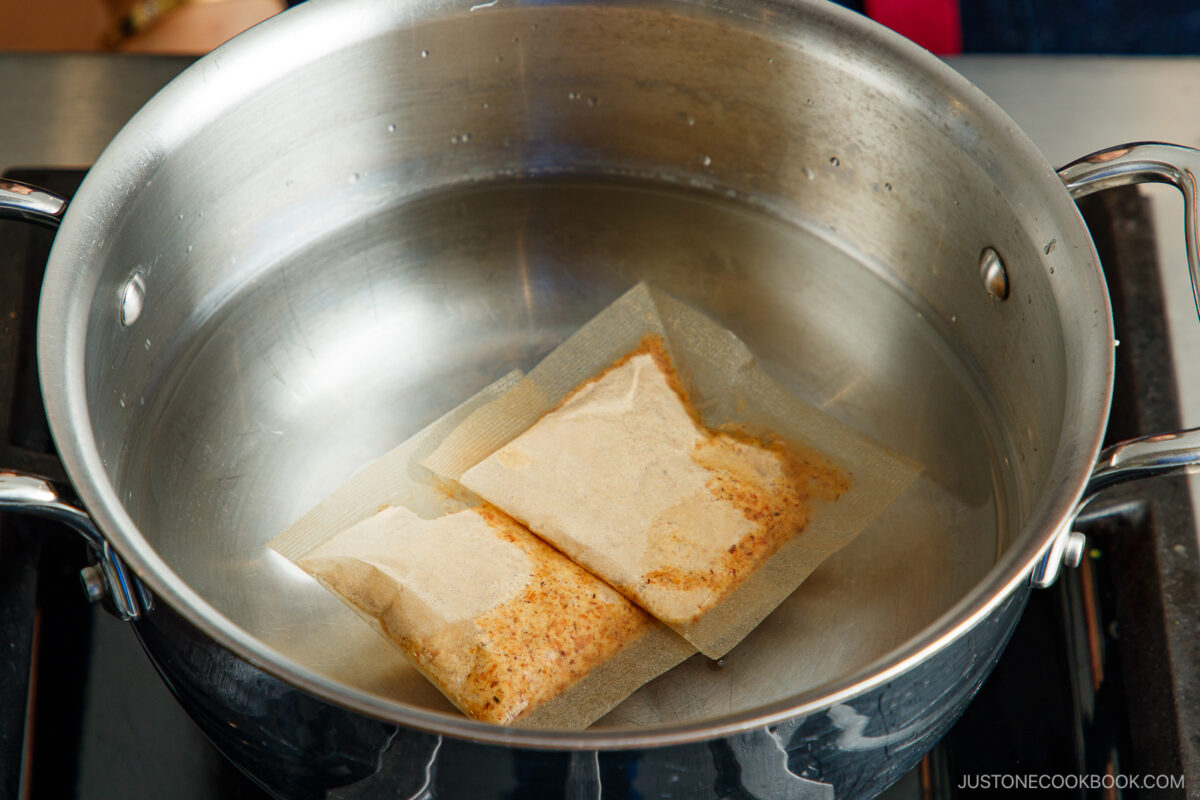
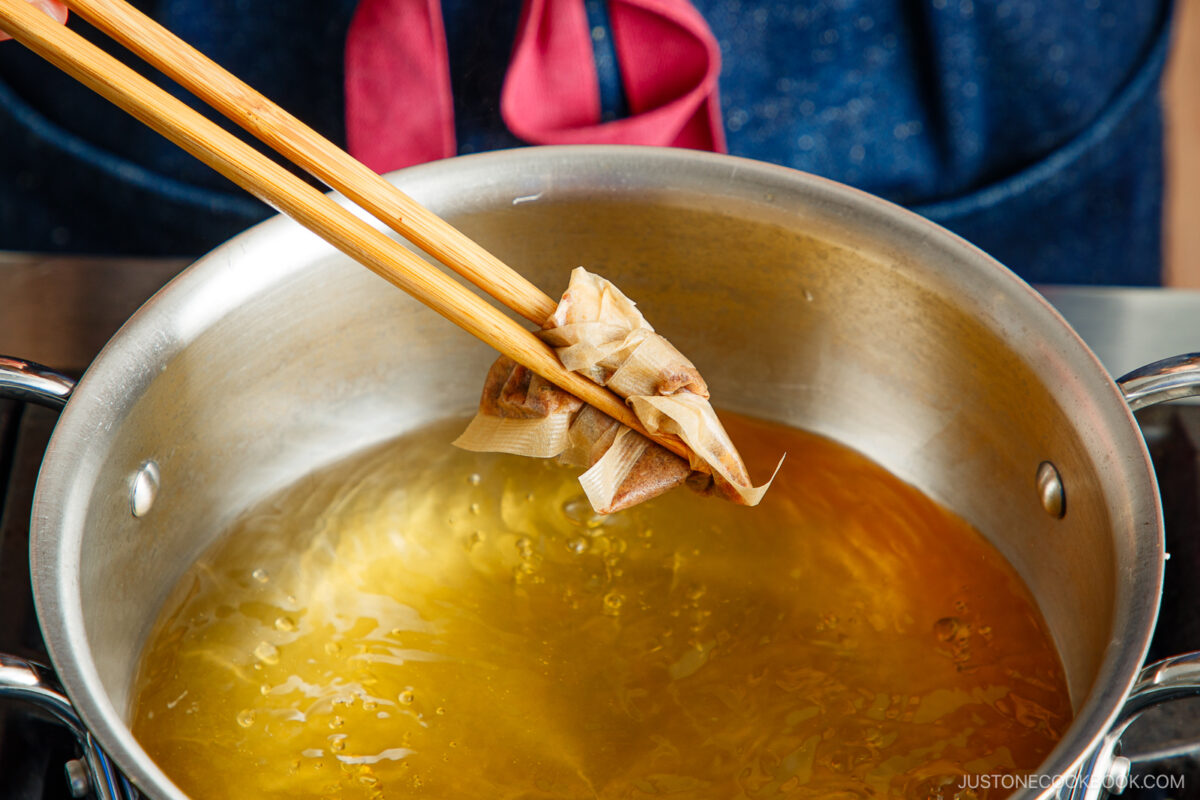
Step 3 – Cook. Cook the shiitake under tender, then add the spinach and stir until just wilted. Turn off the heat.
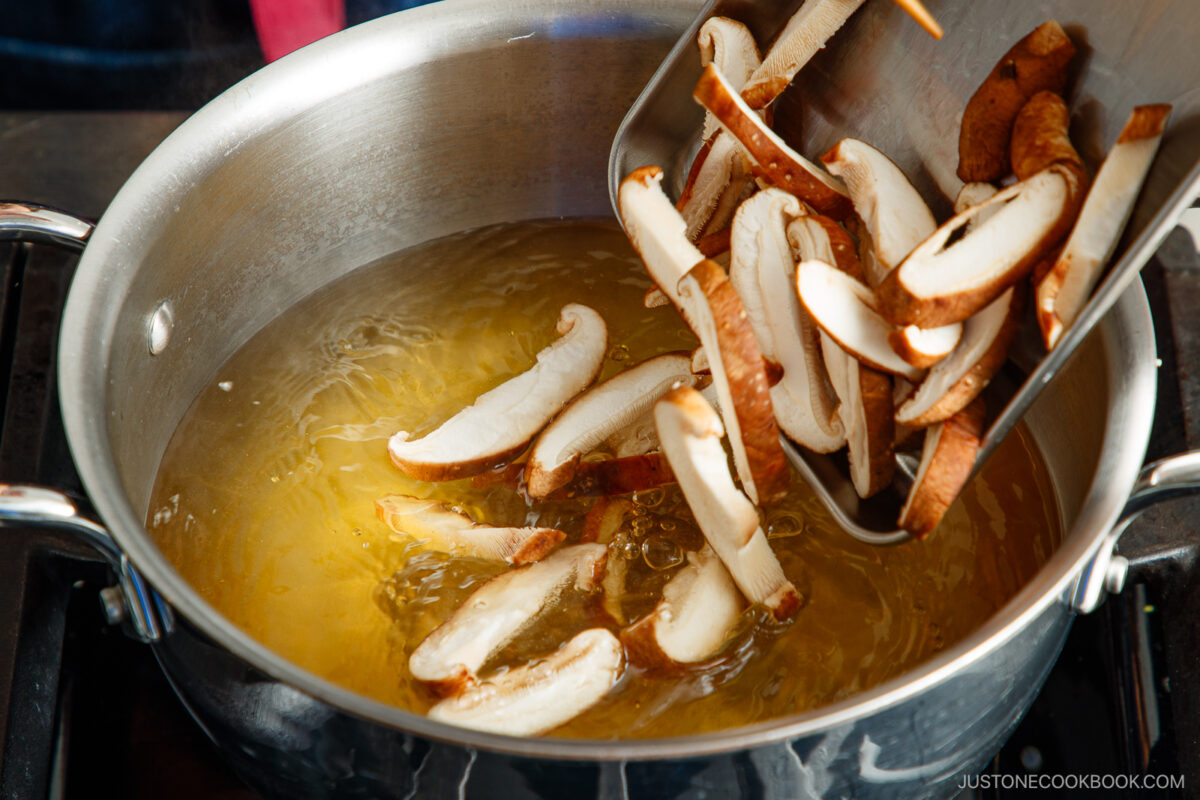
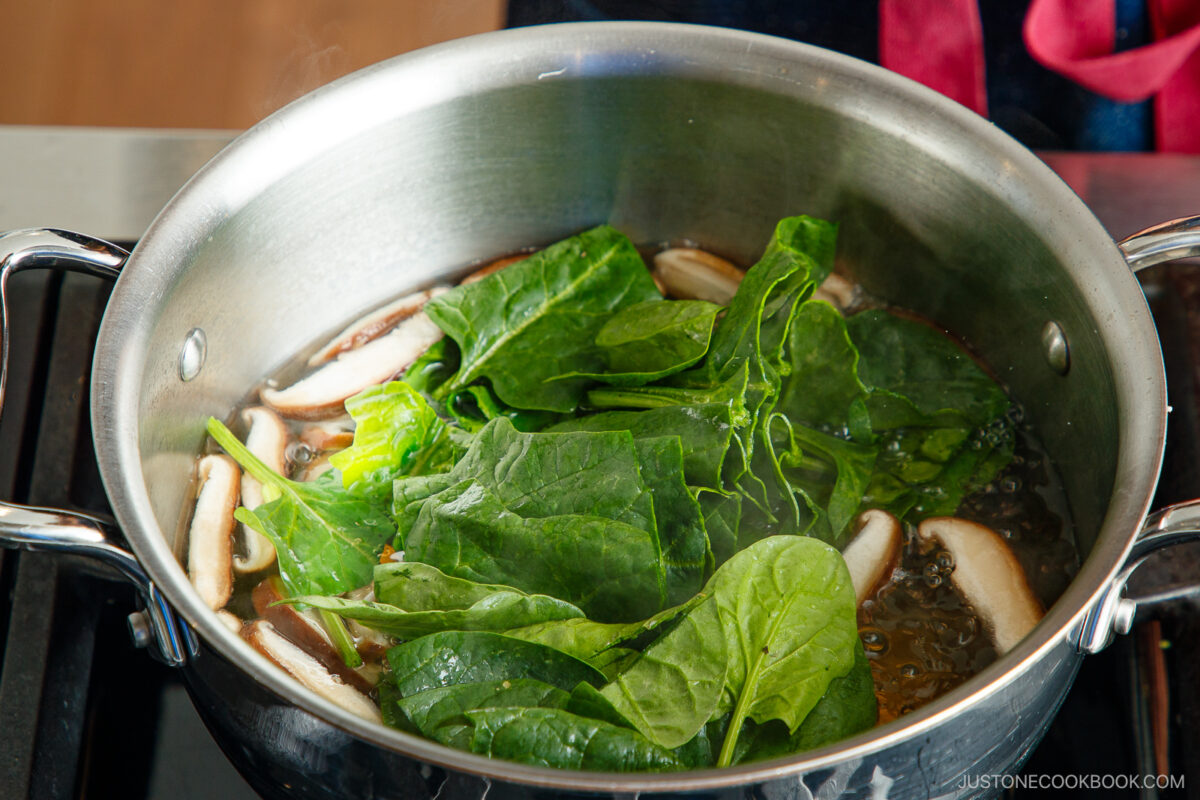
Step 4 – Add miso and tofu. Dissolve the miso paste before releasing it to the soup. Cut the silken tofu and gently add it to the soup. Reheat until just hot.
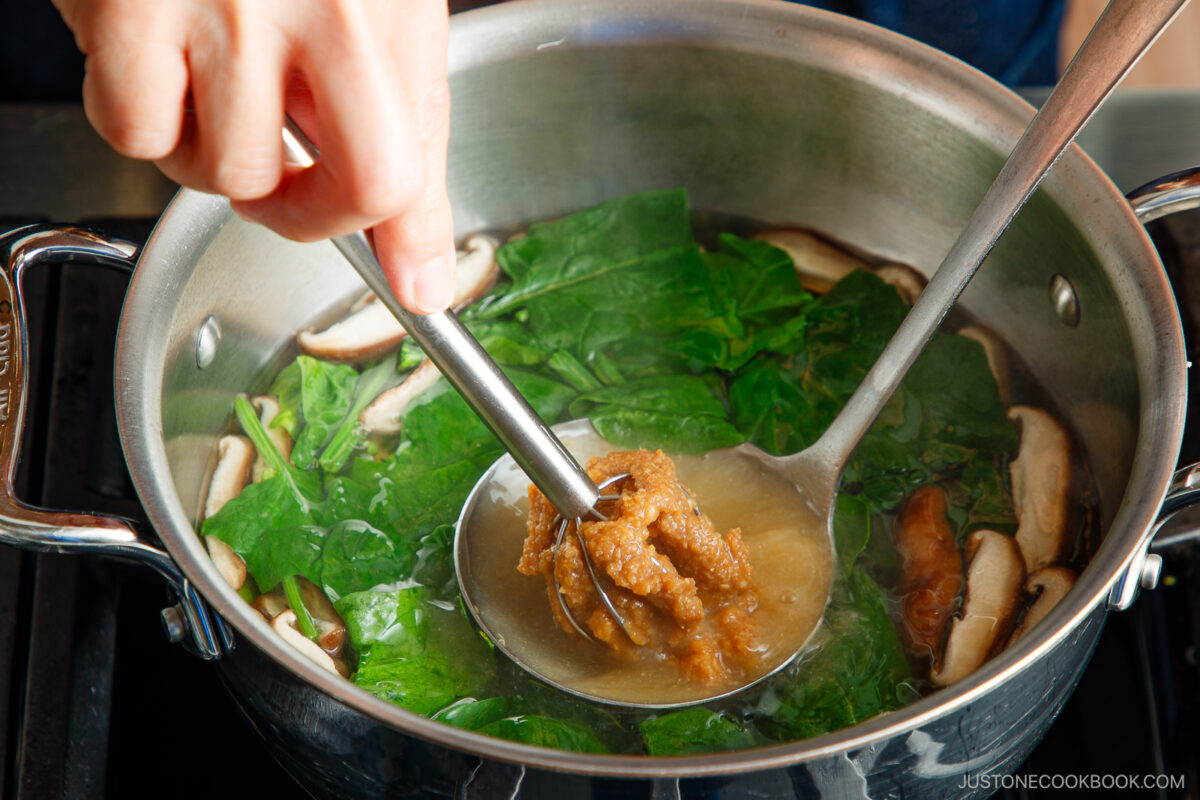
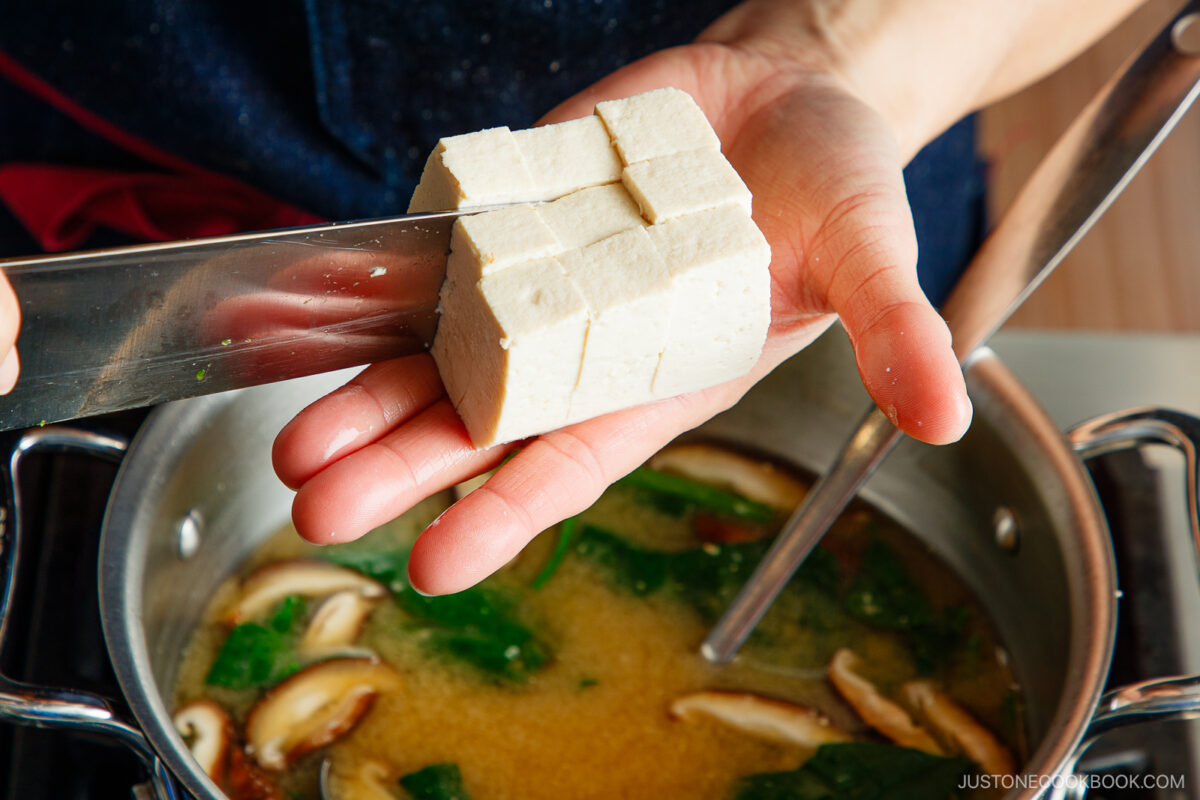
Assemble
Step 5 – Serve. Serve in individual bowls (I used a beechwood miso soup bowl from JOC Goods. Enjoy!


Nami’s Recipe Tips
- Don’t overcook the spinach – I heat it just until it starts to wilt—about 30 seconds—then turn off the heat. The spinach will continue to cook in the hot broth and when we reheat the soup after the tofu goes in. American spinach is tender, so the cook time is short.
- Turn off the heat to add the miso – I turn off the heat when dissolving the miso into the broth. Never boil miso, as it loses aroma and nutrients at high temperatures.
- Dissolve the miso separately – Avoid adding miso paste directly to the pot or you may end up with chunks of it in your bowl. Always dissolve it first in a ladle or strainer. I use a miso muddler and fine-mesh miso strainer for this job.
- Start with less miso – Some have a stronger taste and higher sodium levels, so please add less to start. You can always taste the soup and add more later. I added an extra tablespoon of the mild miso that I used.
- Add the tofu last – Silken tofu is delicate and breaks easily. Add it after you dissolve the miso so you don’t mix the tofu too much and break it.
- Reheat until just hot – After you add the tofu, gently reheat the soup and do not let it boil.
Variations and Customizations
- Try different mushrooms. Other fresh mushrooms work just as beautifully. My favorite types for soup are shimeji, king oyster (eryngi), and enoki mushrooms.
- Swap fried tofu pouches. Instead of silken tofu, try adding aburaage (deep-fried tofu pouches) for protein and a savory flavor.
- Use wakame. Dried wakame seaweed makes a shelf-stable and equally nutritious replacement for fresh spinach.
- Garnish with aromatics. Top the soup with chopped green onions/scallions or chopped garlic chives (nira or Chinese chives).
- Stir in yuzu kosho. This citrus chili paste is fantastic in miso soup! We love to stir in a small dab of yuzu kosho for a bright and zesty flavor.
- Make it with Swiss chard. Like spinach, tender chard leaves are a good source of vitamin C.

What to Serve with This Miso Soup
- With grilled fish – Serve it with delicious Miso Salmon for added nutrition and fiber.
- With noodles – I always serve a nourishing soup that’s low in calories with Yaki Udon.
- With vegetable sides – Try it alongside Blistered Shishito Peppers with Ginger Soy Sauce.
- With a salad – Refreshing Japanese Cucumber Salad makes a lovely contrast.


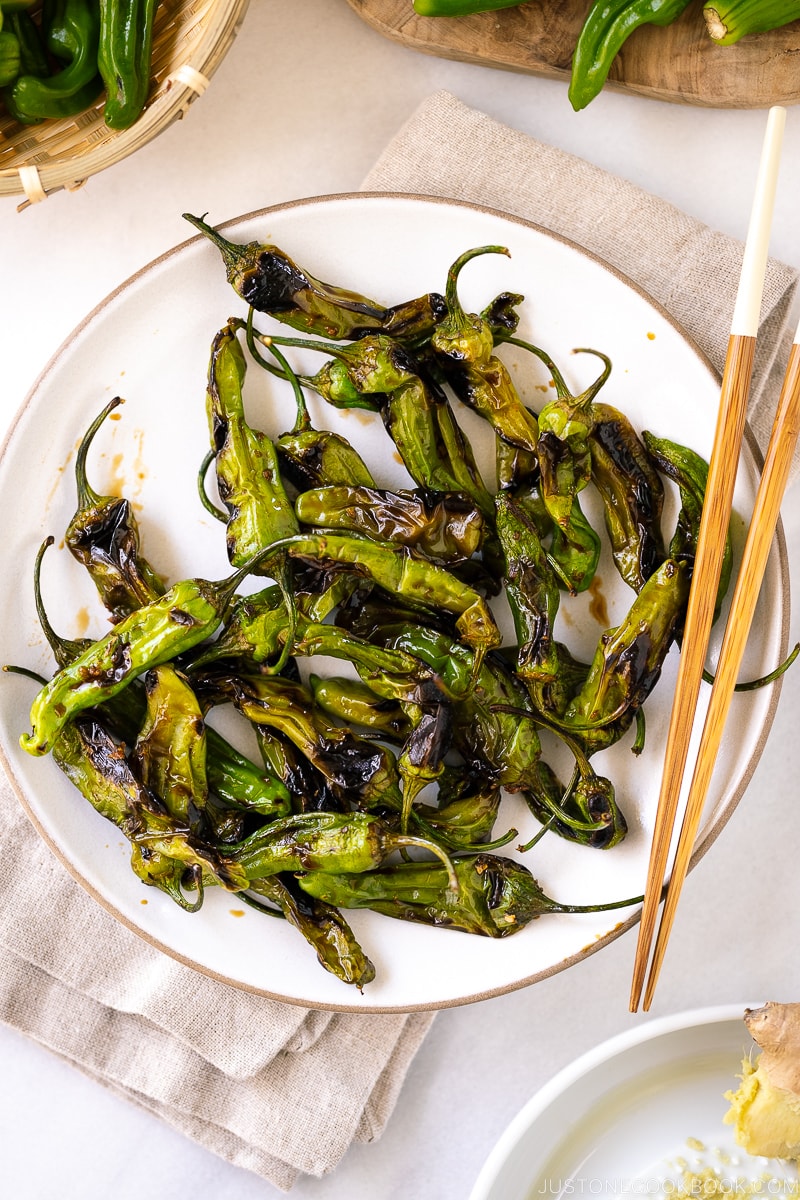
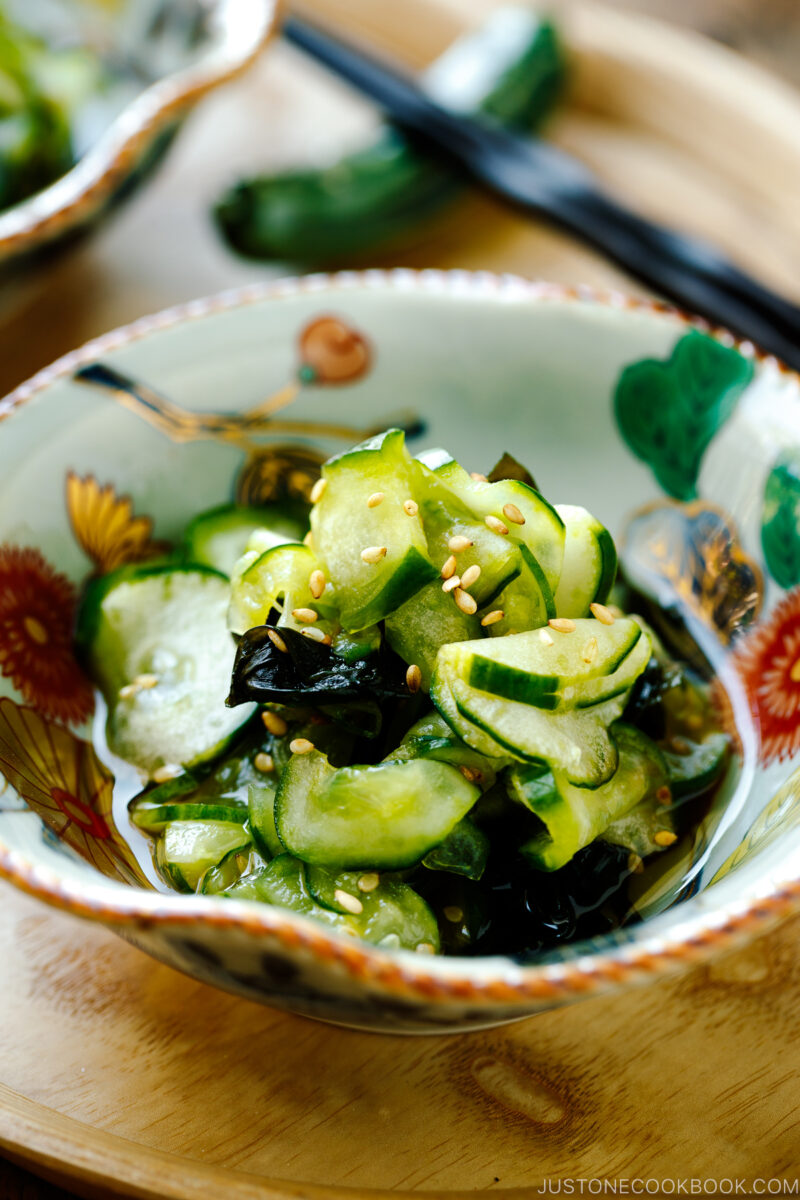
Storage and Reheating Tips
To store: Completely cool any leftover soup and refrigerate for up to 3–4 days. You also can freeze miso soup for up to 2 weeks. However, it‘s best to consume all the miso soup right away because it will lose its aroma and taste as time passes.
To reheat: Bring it to a bare simmer in a pot over medium heat, but do not boil it. Miso loses its nutrients, flavor, and aroma at high temperatures.
Frequently Asked Questions
You can use any kind. Common types you’ll find outside of Japan are red, awase, and white miso paste. For everyday soup, I often use a slow-aged red koji miso called Kodawattemasu by Hikari Miso®. It is free of additives and preservatives, is made of organic soybeans and rice, and has a rich and mature flavor with the full-bodied umami of soybeans and the sweetness of rice.
Yes! I recommend Awase Dashi made with kombu (dried kelp) and dried bonito flakes (katsuobushi). Nothing beats the flavor, but making it from scratch does add to the prep time and total time for the recipe. If you have time, you can always make a large pot of dashi ahead of time. Cool it and store it an airtight container in the fridge for 4–5 days to use for various recipes throughout the week.
It is, as long as you use a miso that is gluten free. Most miso is made with soybeans and rice, but some use barley and wheat. Please check the package label. You’ll notice that miso does contain carbohydrates. It’s also a good source of vitamins, minerals, prebiotics, and probiotics. It’s rich in vitamin K, manganese, copper, and zinc. It also contains calcium, iron, B vitamins, and magnesium.
You could, but they are not traditional flavors for Japanese miso soup.
Spinach and Mushroom Miso Soup
Ingredients
- 4 shiitake mushrooms (3 oz, 85 g)
- 1 small bunch fresh spinach (2 oz, 60 g)
- 3 cups water
- 2 dashi packets (to make quick dashi; you can also make Awase Dashi from scratch or instant dashi with dashi powder and water)
- 3–4 Tbsp miso (any miso type; start with the lesser amount and add more later, to taste)
- ¼ block soft/silken tofu (kinugoshi dofu) (4.5 oz, 130 g)
Instructions
- Gather all the ingredients.
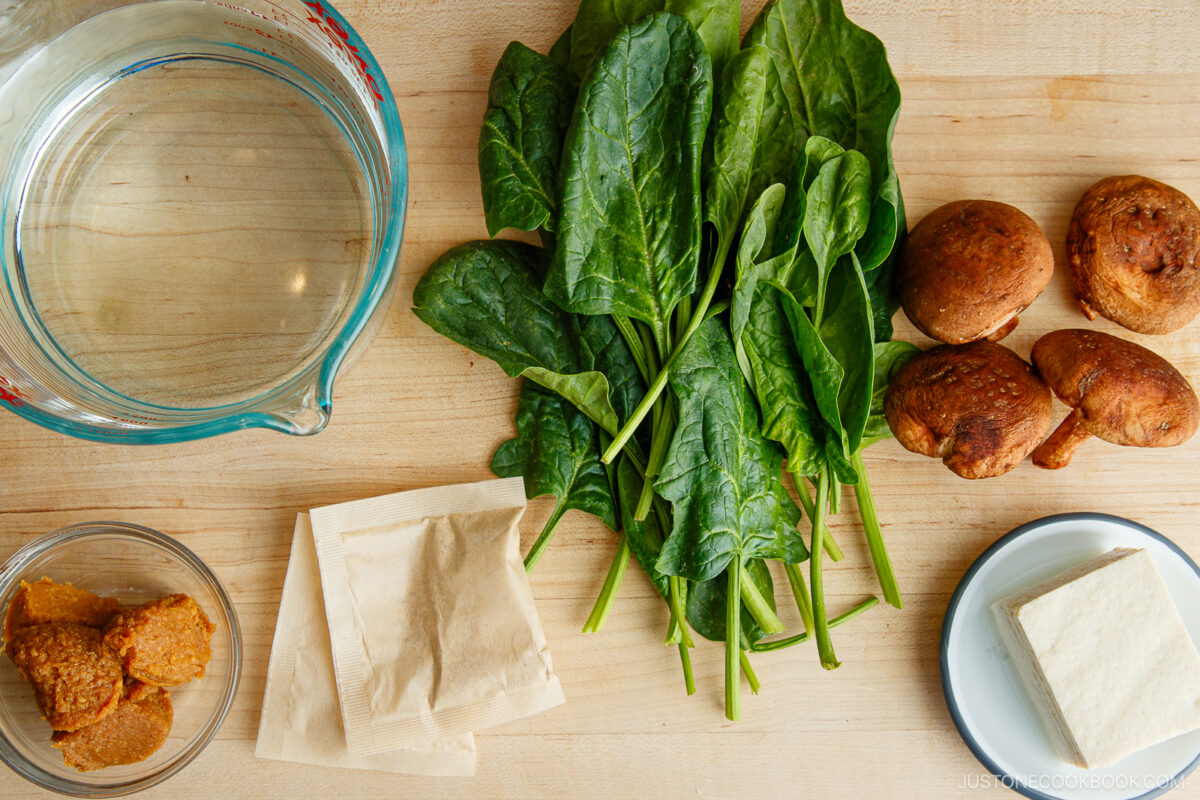
- Cut off the stems of 4 shiitake mushrooms. Then, thinly slice the caps.

- Trim off the very ends of 1 small bunch fresh spinach. Chop the spinach into 2-inch (5-cm) lengths.

To Cook
- Add 3 cups water and 2 dashi packets to a medium saucepan. Cover with a lid and bring it to a boil on medium heat.
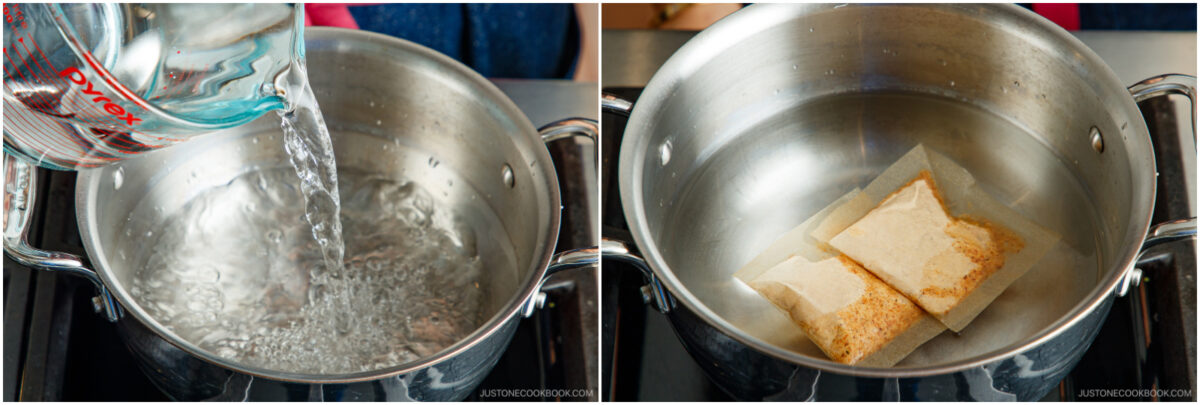
- Once the water is boiling, shake the packets with cooking chopsticks to release more flavor. Reduce the heat to medium low and cook, covered, for 2–3 minutes. Discard the packets.
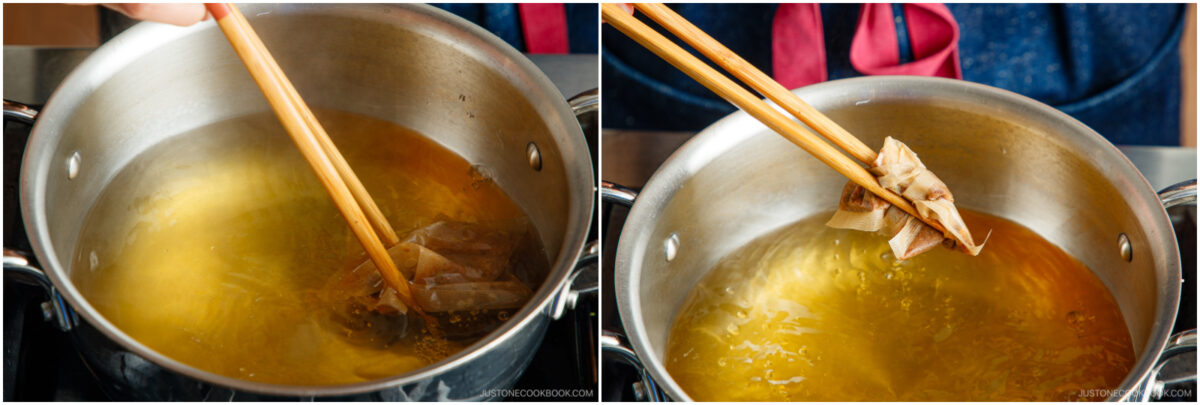
- Add the shiitake mushrooms to the dashi and bring it to a boil. Simmer until the mushrooms are tender, about 2–3 minutes.
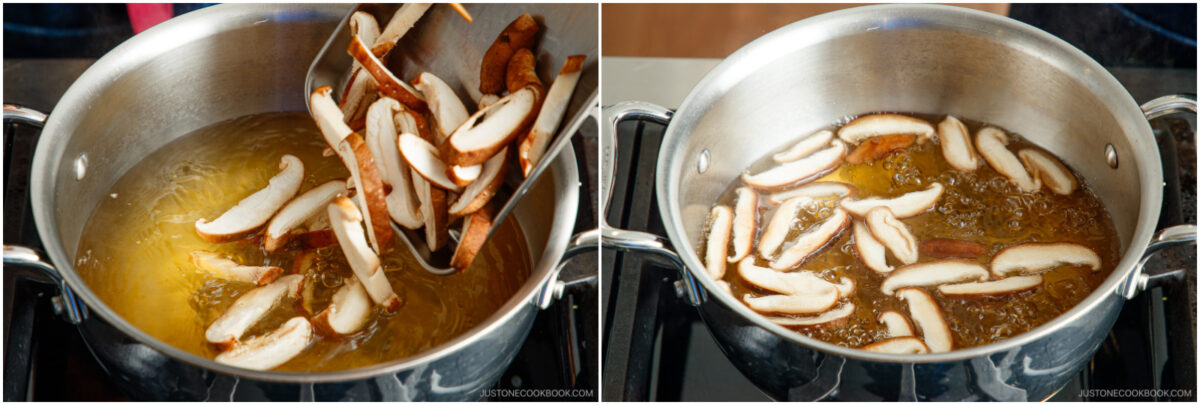
- Next, add the spinach. Stir it into the soup and gently heat until it starts to wilt, about 30 seconds. American spinach is very soft, so it cooks quickly. Then, turn off the heat. Tip: Do not overcook, as the spinach will cook more after we add the tofu and reheat the soup.
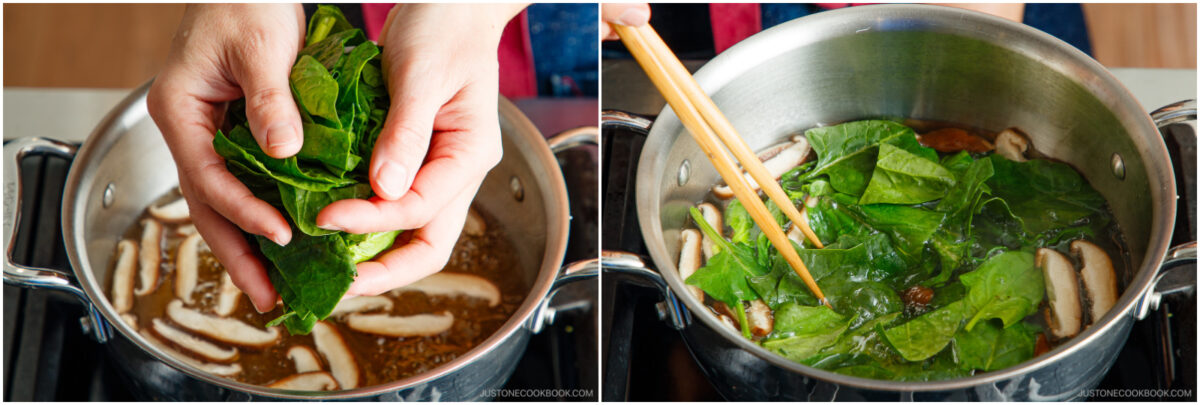
To Add the Miso and Tofu
- With the heat turned off, add 3 Tbsp miso to a ladleful of hot stock. Mix with chopsticks to dissolve it completely, then stir it into the broth. I use a miso muddler to measure and dissolve the paste; you can also use a fine-mesh miso strainer instead of a ladle. Now, taste the soup and add more miso, if needed. If it‘s too salty, dilute it with more water or dashi, if you have any. I added another 1 Tbsp miso since the particular type I used has a mild flavor.
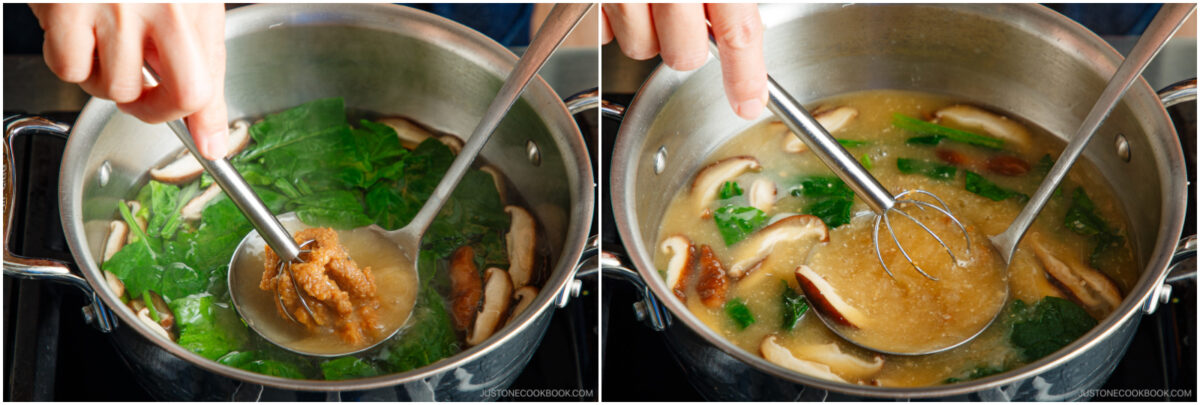
- Cut ¼ block soft/silken tofu (kinugoshi dofu) into ½-inch (1.3 cm) cubes. Add to the miso soup. Tip: Completely dissolve the miso before you add the tofu; otherwise, the silken cubes could break when stirring in the miso. Note: It is very common to cut tofu on your palm in Japan. However, I recommend using a cutting board if you have never done this.
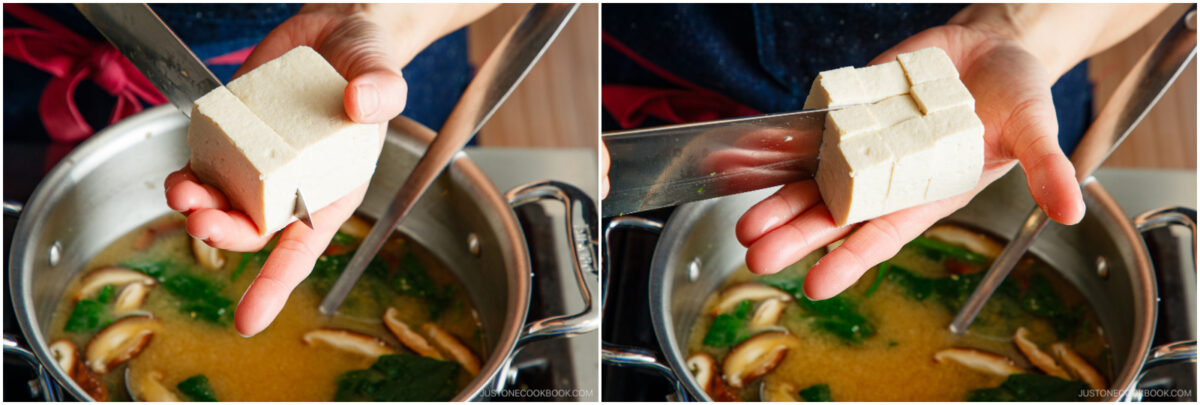
To Serve
- Gently reheat the soup until just hot. NEVER BOIL miso soup because it loses nutrients, flavor, and aroma. Once it‘s hot, turn off the heat and serve immediately in individual bowls. Place on the right side of the table setting; you can read about how to serve it at the table in my post Ichiju Sansai (One Soup Three Dishes).
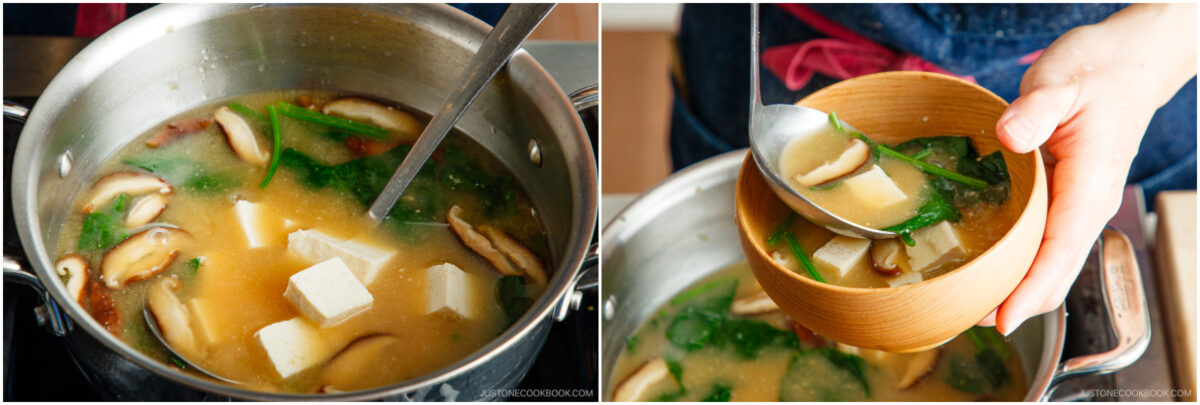
To Store
- It‘s best to consume all the miso soup right away because it will lose its aroma and taste as time passes. Completely cool any leftover soup and refrigerate for up to 3–4 days. You also can freeze miso soup for up to 2 weeks. To reheat, bring it to a bare simmer in a pot over medium heat, but do not boil it. Miso loses its nutrients, flavor, and aroma at high temperatures.
Nutrition
Did you make this recipe?
Tag @justonecookbook on Instagram so we can see your delicious creation!



